
Rigsby Hull is a Houston-based graphic design firm well-known for creating engaging, intelligent communications specializing in brand communications strategy and identity development for corporations throughout the US.
AIGA Houston’s John Luu was able to stop by Rigsby Hull’s studio to speak with principal and senior designer Thomas Hull and designer Daniel Pagan about their design background and the process that comes into play at Rigsby Hull.
John Luu / How did you first get into design?
Thomas Hull / My dad is a graphic designer so my first exposure to design was going out on press back when there was alcohol in the fountain solution and you could get high walking into the press room. It was pretty fun. Great exposure for a five year old. There was Rubylith, keylines and traditional paste-up, that’s what I grew up around even though I didn’t really have to mess with too much of that by the time I got to school. That was my introduction to it, it was in my DNA.
Daniel Pagan / I think it was ‘97, when our family purchased it’s first PC (Compaq). I went straight for Paint (Windows 95). As a senior in high school three media programs were introduced — all of which I signed up for. I fell into it—like a lot of designers. I didn’t know what design was until my second year in undergrad. That summer I checked out several books form the library. Among them, Steven Heller’s, Becoming a Graphic Designer (which had greatest impact).
TH / Way more fun than being a rocket scientist.
How did you two come to join Rigsby Hull?
TH / When I came out of school in the 90’s, I had absolutely no interest in moving to Texas. The west coast—Seattle, Portland, San Fransisco—was a hotbed of design. I really wanted to go there, but every body else on God’s green earth had the same idea. I had family that lived here in Houston. I knew Rigsby Design’s work and I thought “I’ll go down and check out Texas”. I had the whole John Wayne, red rock picture of Texas so when I flew into Houston it was so very green, I was surprised it was not sagebrush and cow skulls everywhere.
DP / I wasn’t looking to come to Texas either (laughter). I was raised just north of Houston. I studied in Florida then in England and wasn’t looking to return to Houston. I searched a lot in England and all over the United States. In the end, I realized being close to family was important. I did an extensive search in Houston and Austin. I found Rigsby Design towards the end of my Masters in England (I think via Armin’s Speak Up). I kept a close eye on Rigsby and eventually contacted Thomas via email.
TH / He sent a really, really good email. Short, sweet and intelligent.
DP / I came in and enjoyed it. We kind of thought the same way and knew some of the same people. If I wasn’t with Rigsby, I probably wouldn’t be in Texas.
Where were you coming down from?
TH / Utah. I came down and really liked it, although it was kind of a bait-and-switch, I came in May to meet with Lana, it was beautiful here and it was still kinda cold and wet in Utah and then I moved to Houston in August and thought, “Well this sucks”.
And that was it, I had always followed Lana’s work when I was in school and thought it was really great and so she happened to have an opening at the time—I think I was the first out-of-towner — and I’m still here, fourteen years later.
If you had 3 words to describe Rigsby Hull what would they be?
TH / Naked. We’ve heard “naked” haven’t we? Ok scratch that. I think “Intelligent”, “Concise” and “Clean”. Those would be three words I would use.
DP / I’m thinking, “Traditional” would be one. In the sense of having an affinity for how, specifically, detail in typography is approached and understood in a traditional way. “Considered” could be another one and maybe “Pure”.
TH / We’re not decorative with what we do. Not to say that it’s stark all time, but “considered” as in there just aren’t any wasted elements. I hate things that are there for decoration. We are not decorators. We’re communicators. And our job is to communicate clearly and passionately the goals and messages that our clients want to convey. And so, when I think of clean I think of our typography as sophisticated, fundamental. If you look through our body of work, you’ll find a range from black and white photography with clean helvetica type on a white page to really involved, intricate patterns, images and colors that use a variety of materials and print methods. There’s a wide range of things but it’s all pretty focused.
One thing I hear in regards to your work from other designers is, “How did they convince the client to sign off on that?” I’ve kind of wondered that myself. What’s your processs?
TH / I think it’s two things; We listen really well and I think we’re also pretty good at framing the work and the reason why we did something. I think that goes back to considered, thoughtful design. I mean, if you’re designing something and it’s green just because you like green and grassy green is really cool that year, that’s difficult to defend if you got a client that’s thinking “I have no freaking reason why we should use grassy green and it reminds me of…” whatever, that stuff becomes subjective.
But if you listen well and listen for when the client says, “This is our business strategy, this is where we are going, this is what our peers and competitors are doing and this is how we think we are different”.
You listen to that and figure out what is unique in that story and come back and show them “This is what this means and this how we’ll communicate those messages both in content and visually.” When we present preliminary design and before we show them anything, we spend a good deal of time building the story behind the strategy and design of the program. A lot of that has to do with reminding the client what they told us.
So we get everybody on the same page, telling them why we did what we did and so they’re all saying “yes” and get them visualizing what it looks like before they’ve seen a thing. So when you finally reveal the program, it just seems to make sense because you’ve already connected all the dots and built the story around what you’re presenting.
So comments like “Well, should it be red or blue” aren’t relevant because you’ve already told them why you’re going to do what you need to do. If you’ve done your job of connecting the design solution to their business strategy, then any conversation trying to mess with the work can always be tied back to “Why do that? Has your business strategy changed? Has the design brief changed?” Because if none of those things have changed then there’s no reason to mess with the solution we’ve presented.
DP / A small thing to add; there’s an honesty in knowing what the correct solution is. It’s not just about selling something we like. If it were photography, it’s something compositionally or it tells the story better. In the way Pollock creates a painting, we all understand why it’s a Pollock. There’s an intrinsic honesty that communicates back to the buyer/client.
TH / Also, we don’t present options. We don’t present multiple “right answers”. Because then that opens up the whole door to “Well if brochure A and brochure B and brochure C are all good then why not a combination of B and C?” There’s little reason to have multiple solutions.
DP / I should say, there are multiple solutions like there are multiple truths. Given a project, the solution will be a product of experience and approach. Things picked up along the way, what’s seen, who’s involved, where they’re from, where they go, what they do etc. It all comes together and informs the final solution. That’s why we can comfortably present one solution, because it’s our solution.
TH / And I think that’s why people come to us and that’s why firms hire us. They know what they’re going to get, I think we’re a pretty painless design firm to work with mostly because we are so clear and concise. So that makes a client feel very confident in the work since we’re confident in showing it. It makes the approval process more straight forward, because they’ve heard the strategy behind the solution, they’ve seen the work, there aren’t a plethora of solutions to pick from.
DP / Many [solutions] are explored and tailored down to only a few most appropriate directions. Those few are developed further leading to one as the most viable. We do this internally. It’s never just one solution (work on one solution present one solution). There’s a lot of exploration and we come to one solution based on that study.
Rigsby Hull is a small agency but you guys have more than your fair share of national accounts. How are you guys able to stay small but still pursue the type of work that interests you?
TH / I like to have more than my fair share! (laughs) It comes down to the type of work that interests us. That sounds like the easy answer, but it’s truly what we’ve chosen to do. When I came, Lana had a firm vision of what type of work we did, who we did it for and how we were going to work. Together, we’ve been able to perpetuate that set of core values as a firm and will continue to do so.
We’ve made a conscious decision to avoid project oriented work—where you’re doing one-off brochures—work with a limited scope and impact on our client’s business. The work we’re most interested in is long-term, large scale, multiple component programs for companies and organizations on a national scale.
When you do that type of work, it gives you two things: a long, stable relationship with a client and communications that truly have an impact on the performance of the company.
And when we do that scale of a project we always look for the shortest distance to the top, so we’re very often working directly with the CEO or the president of the company or their CMO. We really avoid relationships where we’re working with the third rung down because it makes it way too difficult to get approvals that move these large programs forward.
I think it goes back to how we “get away” with what we do. It’s in part because we’re dealing with the people who get things done in an organization. When you present something to the president and top management of a company and they understand it and can explain it to the rest of the organization, then it doesn’t really matter what anybody else thinks.
How long have you been members of AIGA?
TH / Since I was in school, so, 16 years, somewhere around there.
DP / I joined as a student in 2004. 5 or so years.
What do you get most out of AIGA?
DP / Professional support. AIGA supports the business of design. An extremely important ingredient in what we do. “GAIN” is a very important branch of AIGA. The support is important being such a young industry. I think the industry is very self aware. We know how to dress ourselves. AIGA is the suit and tie of what we do. It’s our industry “best dressed”. The designer resources, the reading, the gathering/conferences… it’s all very nourishing to a growing community and industry.
TH / Also, I would have to say in terms of support, “advocacy” as well. We’ve had—and still do have—pressing issues around copyright and spec work. Lana is involved with AIGA national and shaping AIGA’s guidelines for spec work as well as educating our client base on how to work with a designer, how to hire a designer, what spec work means and why we don’t do it.
So I think that type of advocacy and leadership enhances the industry because we do constantly battle against the perception that we’re not a professional service same way as other professional services. We’re at times perceived as a bunch of folks who have a great hobby that we’ve managed to turn into a career as opposed to a doctor or a lawyer or an architect—which are considered professional services—AIGA goes a long way to helping establish us as peer entities to lawyers or architects.
Do you have any advice for designers still in school?
TH / Look. Look, look, look. Read, read, read. Be hungry. That sounds like such a tired phrase “be hungry” but you can not take anything for granted. I wish I was better at presenting when I came out of school. Learn how to articulate the story or strategy in your work: why you do it and what you learned from it and what the achieved objective is.
If you can explain how a piece achieves a particular objective—what it is and why it matters—that would be a very good skill to have. It would be even better if you could explain that objective and get me to start visualizing with you what the the design solution might look like before ever showing it to me.
For me I don’t really care about the explanation of the paper or the type choices or things like that because I can see that, but tell me why you did it, and what that achieves, and I think that pays off in the long run because that’s what we do, I mean, we spend very little time explaining to the clients “This is Helvetica and it’s on Mohawk Navajo because it feels nice” it’s about why we did it, what strategic objective it acheives and what impact it will have on them as a business. If you can articulate that in your own work than that goes a long way into what real life is about.
DP / I’m not sure if I was told directly or heard it said at a conference, “…be present in your industry”—I do know I heard it while being present in my industry. Be there. Go to conferences, read and participate—online, in books. Know what books are available.
By looking at the spines of books in the design section of Borders, I know which are new, which are classic, and which are useless (Sagmeister’s “Made You Look” is back in print!). Also, looking outside of design. What is Nussbaum discussing on design over at Business Week? At AIGA NEXT, in Denver, 2007, a study (in the form of a book) was included in our little bag—Concept Design. It’s an important study about a new approach to design — a shift to asking what instead of how. Download the PDF to learn more:. Be present in your industry—know how other industries affect and support what we do. I’d also add, learn to share. Open source is important. There are no secret type fonts.
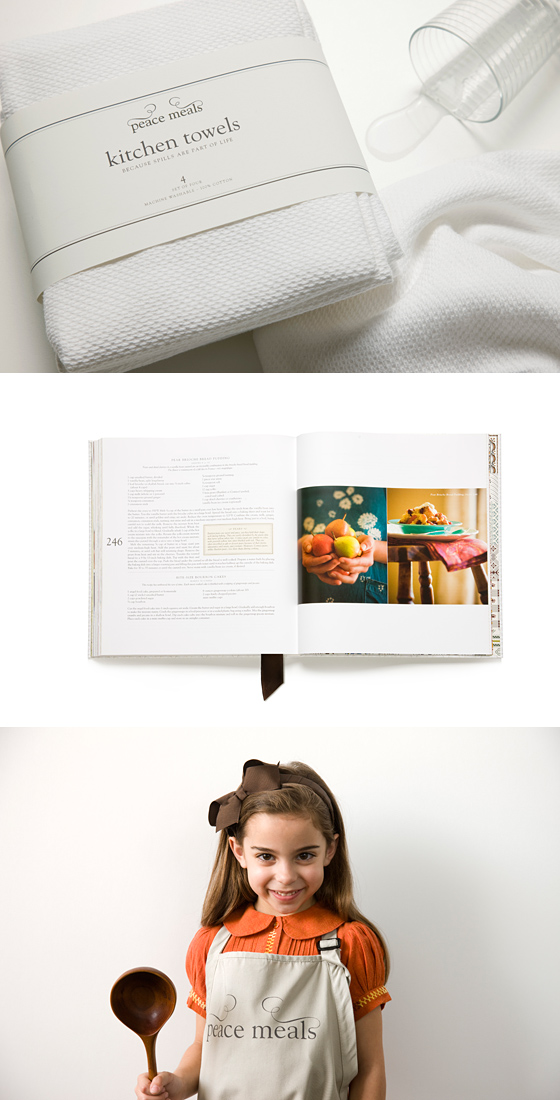
Peace Meals
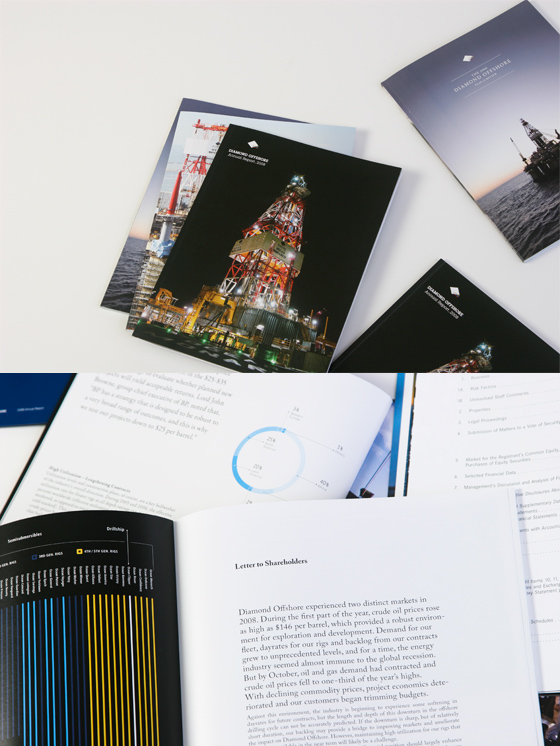
Diamond Offshore
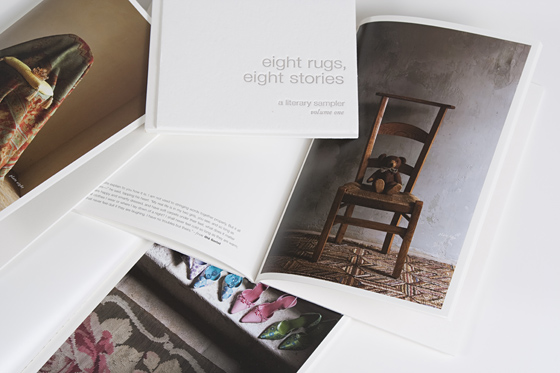
Carol Piper Rugs
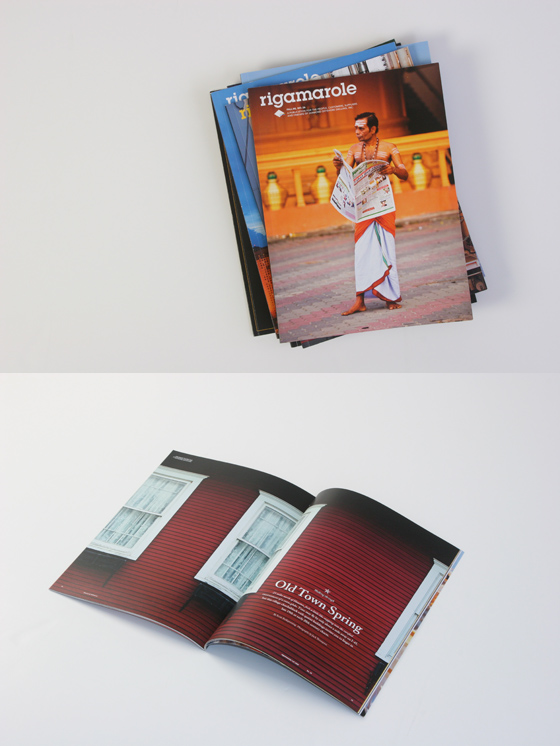
Rigamarole
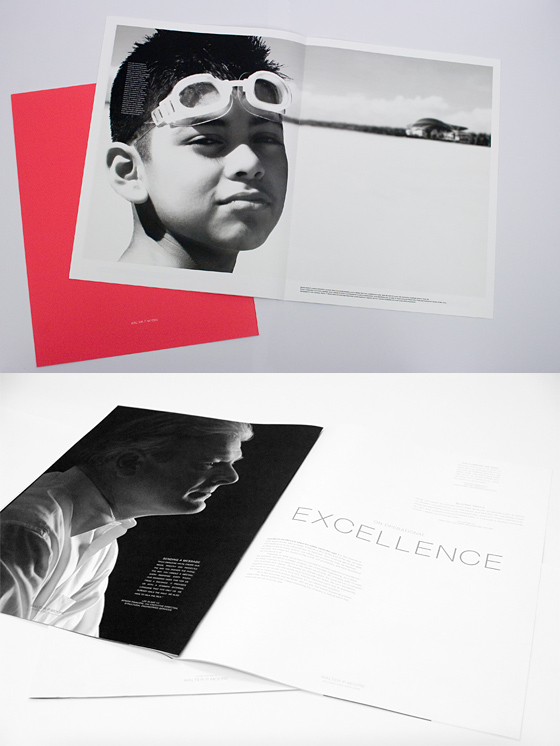
Walter P Moore
To learn more about Rigsby Hull please visit their website at www.rigsbyhull.com.
If you would like your studio featured on AIGA Houston please contact John Luu, info@houston.aiga.org for more information.